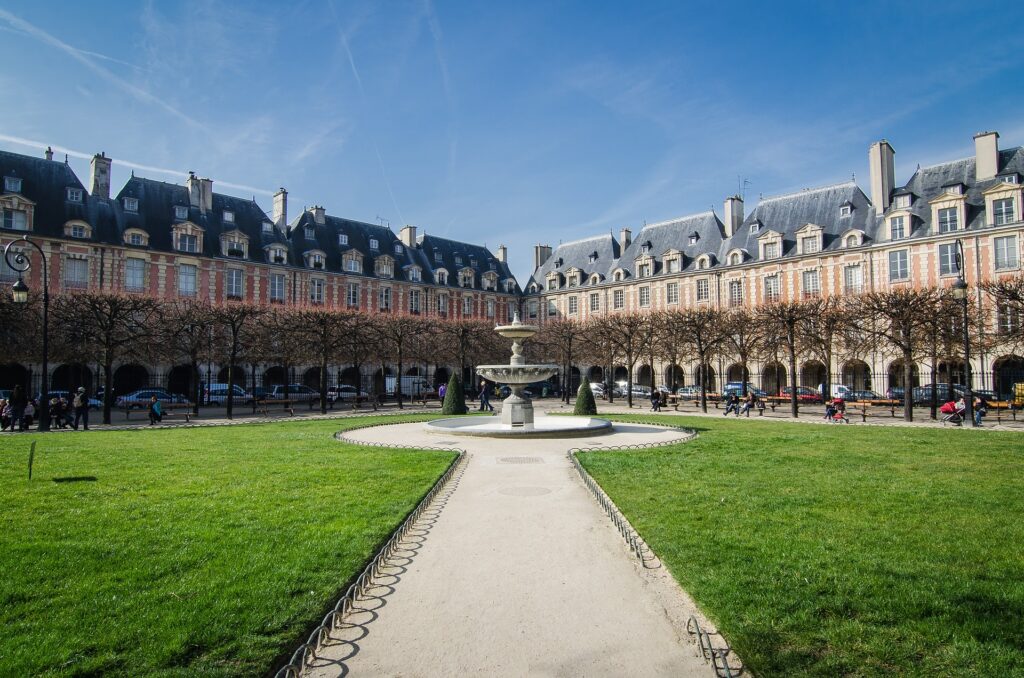Our tour of Paris is back! This week, it’s time to take a look at the beautiful and historic 4e arrondissement of Paris. This district is one of the most visited in Paris, and for good reason. Whether you’re looking for historical monuments, incredible food, or amazing shopping, the 4e arrondissement has it all.
Notre Dame de Paris
The 4e arrondissement is home to the lower half of the Marais, but it is also home to the eastern half of the Île de la Cité. Which means if you would like to see Notre Dame de Paris, you have to visit the 4e. I’ve made no secret of my love for Notre Dame de Paris over the years, and I still consider it to be one of my favourite buildings in all of Paris. Unfortunately, the cathedral is still closed for restoration works. The plaza in front of it, however, is open. I am a frequent visitor, as I love to just look at Notre Dame and dream of the day when it will finally be reopened.
The Narrow Streets of the Lower Marais
The 4e contains the lower half of the Marais, and it is one of the oldest neighbourhoods in Paris. Because of this, it’s filled with narrow, winding streets, as well as beautiful medieval and Renaissance buildings. The 4e is also home to both the Jewish quarter and the gay district, meaning rainbow flags adorn streets filled with synagogues. It’s vibrant, lively, and colourful, and I could spend hours just walking around, taking it all in.
Hôtel-de-Ville
The 4e arrondissement takes its name from the massive City Hall that stands on the western side of the district. Hôtel-de-Ville has been the headquarters of the municipality of Paris since the 14th century, but the building itself has been rebuilt many times. In particular, it was severely damaged during the Paris Commune of 1871, during which a fire destroyed all of the city archives. Today, Hôtel-de-Ville is the seat of the Mayor of Paris and their cabinet, and it is often used to house state receptions and events.
Place des Vosges
Place des Vosges is the oldest planned square in Paris, having been built in the early 17th century by King Henry IV. It was originally meant to be a royal residence, however, after Henry’s assassination in 1610, the buildings in the square were converted into private residences. Today, these stately mansions are some of the most expensive real estate in the city. Thankfully, the public garden in the centre of the square is open to all, and I’ve spent many an afternoon reading a book on the grass in this beautiful park. Place des Vosges is also home to the Maison de Victor Hugo. The famed French novelist lived in this square between 1832 and 1848. Today, the building is open year round as a museum dedicated to his life and works.
Hidden Gems
Berthillon – The best ice cream in Paris. You can buy Berthillon all over the city, but their primary location is in the 4e on the Île Saint-Louis. Be prepared to stand in line!
Hôtel-Dieu – The oldest continuously operating hospital in the world. There is a public garden inside the hospital that is free to enter. It’s a lovely respite from the chaos and crowds of the Notre Dame plaza just across the street.
Hôtel de Sens – One of the oldest medieval buildings in the city. Today, it houses the Forney art library, as well as free exhibitions throughout the year on many eclectic topics.
Saint-Paul-Saint-Louis – A beautiful church that counts a Delacroix among its masterpieces. You can also find graffiti left over from the French Revolution. As you walk down the nave, look for the words “République française ou la mort” scrawled on one of the pillars along the right.
Chez Hanna – Best falafel in the city. Controversial opinion, I know. But I stand by it.
Want to read more about the arrondissements of Paris? Click HERE.
Laura Moore is a professional storyteller who loves history and the many stories that make Paris one of the most fascinating cities in the world. Join one of her signature tours to learn the story of a city.




